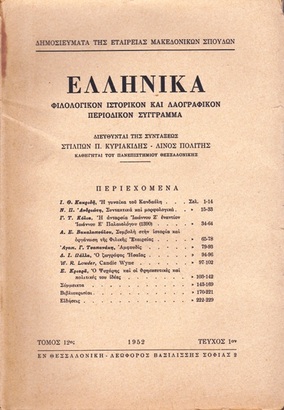Το Μακεδόνικο Ηρώο της Θεσσαλονίκης : Τέχνη και πολιτική στον μεσοπόλεμο
Part of : Ελληνικά : φιλολογικό, ιστορικό και λαογραφικό περιοδικό σύγγραμμα ; Vol.44, No.1, 1994, pages 159-170
Issue:
Pages:
159-170
Parallel Title:
The Macedonian War Memorial of Thessaloniki : Art and Politics in the Interwar Period.
Author:
Abstract:
In 1930 the government of E. Venizelos invited architects and sculptors to submit plans for a monument honouring the victims of the Macedonian Wars, 1903-1908, 1912-1913, 1914-1918. It was to be erected in Thessaloniki and it must have been planned as a huge free standing structure in an ambitious site chosen by the municipality. They saw it as a patriotic symbol of political significance; more specifically as an opportunity to demonstrate that the government was one of national reconciliation. E. Lazarides and K. Lascaris, eminent architects of the time, won the three first prizes of the competition. Their designs were not original. Formally and iconographically they derived from a well-established ancestry. Their conservatism was, however, conscious in the sense that only timeless symbols such as victories, lions etc. and the symbolism of pure geometry, could embody the ideal they were asked to glorify. An examination of three categories of evidence suggests that such attempts belong to the history of the nation as well as to the history of art. 1) The iconographie meaning of monument components as interpreted by the artists and by contemporaries and the significance of the location where the War Memorial was to be erected. 2) The nature of the political and ideological views of the era. 3) The circumstances which finally led to the cancellation of the project
Subject:
Subject (LC):
Notes:
Περιέχει σχέδια του Μακεδονικού Ηρώου




